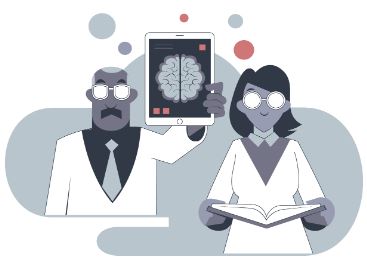
Optimizing Information Intake – A Science Backed Approach to Retention
Learning is a remarkable journey, and understanding how our brains process and intake new information can make it even more rewarding. However, studies show that, on average, people forget half of what they learn within an hour, and retention drops to just 30% after 24 hours. The need for continuous training and new learning is essential to adapt, innovate, and stay competitive in evolving industries and technologies. So, how can we utilize scientifically-proven methods to boost user engagement and improve information retention?
Stay Focused With Bite-Sized Learning
Distractions can hinder the learning process, but understanding the attention from a neurochemical perspective can change the game. According to a study published in the Journal of Cognitive Neuroscience, breaking training into modules and presenting information in smaller, spaced-out sections can improve retention significantly. Participants who underwent modular learning retained 35% more information compared to those exposed to continuous training methods. Given that the average attention span of adults ranges between 10 and 20 minutes, approaches like bite-size learning that break sections into modules of no more than 15 minutes have grown in popularity.
Completion of each module releases dopamine, a neurotransmitter associated with motivation and reward. Research from the Journal of Neuroscience indicates that dopamine release during learning enhances memory consolidation and improves long-term retention. Additionally, the presence of acetylcholine, as studied in the Journal Trends in Cognitive Sciences, facilitates neural plasticity, further aiding memory formation. Moreover, the engaging experience of modular based learning keeps learners focused with a healthy supply of norepinephrine, a stress hormone that, in moderate levels, enhances attention and cognitive performance.
Engaging Your Senses for Stronger Neural Connections
When it comes to learning, just focusing on the duration won’t cut it. If learners aren’t actively engaged and interacting with the information, distractions can take over. If you want your employees to really grasp and remember what they learn in training, place as much emphasis on how you deliver the content as you do to the content itself.
Here’s where multisensory learning comes in – it’s a clever way to learn and remember new things. A study conducted at the University of California, Irvine, found that learners who engaged in multisensory experiences retained up to 50% more information than those who learned through a single sensory mode. When we see, hear, and experience things, our brain establishes stronger connections to the information. Multisensory learning not only engages our senses, but helps to ease the brain’s workload, strengthen the neural connections, and create more robust memory encoding. This results in greater levels of information intake among diverse learners, and a higher likelihood of retaining that valuable knowledge for the long haul.
Embracing Mistakes and Feedback to Enhance Learning
When it comes to effective learning, feedback and testing play vital roles in shaping learners’ understanding and knowledge retention. A study published in the Journal of Psychological Science revealed that regular testing can boost information retention by an impressive 50% compared to passive learning methods. Feedback on mistakes has its own remarkable benefits. According to a meta-analysis of educational research published in the Review of Educational Research, learners who receive feedback consistently outperform those who don’t in terms of knowledge retention and skill development.
Integrating feedback and testing into the learning process is not just an afterthought; it is a powerful and evidence-based approach that significantly enhances knowledge retention and understanding. By embracing mistakes as opportunities for growth and providing valuable feedback, educators and businesses can empower learners to excel and confidently apply their newfound knowledge in real-world situations.
Conclusion
Optimizing information intake through scientifically-proven methods is crucial for enhancing learning outcomes. By implementing bite-sized, modular learning with multisensory experiences, we can significantly boost engagement and retention amongst learners. Additionally, embracing mistakes and utilizing feedback as integral components of the learning process empowers learners to grow, excel, and apply their knowledge with confidence. These strategies pave the way for a more engaging, effective, and confident learning experience, leading to greater success in applying knowledge and skills in real-world situations.
